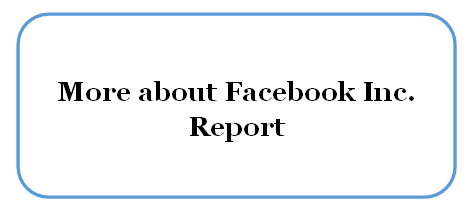Facebook Inc. Segmentation, Targeting and Positioning: Targeting the Widest Customer Segment
 Facebook Inc. segmentation, targeting and positioning comprises a set of activities directed at identifying specific groups among the population as potential customers (site users) and developing products and services according to the needs and wants of this specific group.
Facebook Inc. segmentation, targeting and positioning comprises a set of activities directed at identifying specific groups among the population as potential customers (site users) and developing products and services according to the needs and wants of this specific group.
Segmentation involves dividing population into groups according to certain characteristics, whereas targeting implies choosing specific groups identified as a result of segmentation to sell products to. Since its launch in 2004 as a social networking site exclusively for Harvard students, Facebook’s target customer segment has been consistently expanding. Nowadays, the social media giant targets a wide range of customers aged from 13 years old and older.
Positioning refers to the selection of the marketing mix the most suitable for the target customer segment. Facebook uses multi-segment type of positioning and accordingly, it targets multiple customer segments at the same time with different social media platforms. For example, Facebook social media site targets individuals interested in a full range of social media services such as pages, news feed events etc., whereas Instagram targets customer segment who are interested exclusively on photo sharing.
Facebook Inc. also uses adaptive positioning strategy across its brands, repositioning products and services according to changes in preferences of the target customer segment.
The following table 2 illustrates Facebook segmentation, targeting and positioning:
| Type of segmentation | Segmentation criteria | Facebook Inc. target customer segment | ||||
| Messenger | What’s Up | Oculus | ||||
| Geographic | Region | International | International | International | International | International |
| Density | Urban & rural | Urban & rural | Urban & rural | Urban & rural | Urban | |
| Demographic | Age | 13 and upwards | 13 and upwards | 13 – 40 | 16 – 45 | 13 – 40 |
| Gender | Males & Females | Males & Females | Males & Females | Males & Females | Males & Females | |
| Life-cycle stage | Bachelor Stage Newly Married Couples
Full Nest I Full Nest II Full Nest III Empty Nest I Empty Nest II |
Bachelor Stage Newly Married Couples
Full Nest I Full Nest II
|
Bachelor Stage Newly Married Couples
Full Nest I
|
Bachelor StageNewly Married Couples
Full Nest I
|
Bachelor Stage | |
| Occupation | Students, employees, professionals | Students, employees, professional | Students, employees, professionals | Students, employees, professionals | Students, professionals | |
| Behavioral | Degree of loyalty | ‘Hard core loyals’ | ‘Hard core loyals’ ‘Switchers’ | ‘Hard core loyals’ ‘Switchers’ | ‘Hard core loyals’ | ‘Switchers’ |
| Benefits sought | Communication Sense of belonging
Recreation |
Communication | Communication Sense of belonging
Recreation |
Communication | Recreation | |
| Personality | Easygoing, determined and ambitious | Easygoing, determined and ambitious | Determined and ambitious | Easygoing | ||
| User status | non-users, potential users, first-time users, regular users | non-users, potential users, first-time users, regular users, | non-users, potential users, first-time users, regular users, | first-time users, regular users, or ex-users | non-users, potential users, first-time users, | |
| Psychographic | Social class | Lower class/working class/middle class/upper class | Lower class/working class/middle class/upper class | working class/middle class/upper class | Lower class/working class/middle class/upper class | middle class and upper class |
| Lifestyle[1] | Mainstreamer Aspirer
Explorer |
Mainstreamer Aspirer
Explorer |
Aspirer Reformer
Succeeder |
Mainstreamer Aspirer
Explorer |
Explorer Succeeder | |
Facebook Inc. Report constitutes a comprehensive analysis of marketing strategy and business strategy of Facebook. The report illustrates the application of the major analytical strategic frameworks in business studies such as SWOT, PESTEL, Porter’s Five Forces, Value Chain analysis and McKinsey 7S Model on Facebook Inc. Moreover, the report contains analysis of Facebook’s leadership and organizational structure and discusses the issues of corporate social responsibility.
[1]According to Cross Cultural Consumer Characterization by Young & Rubican

